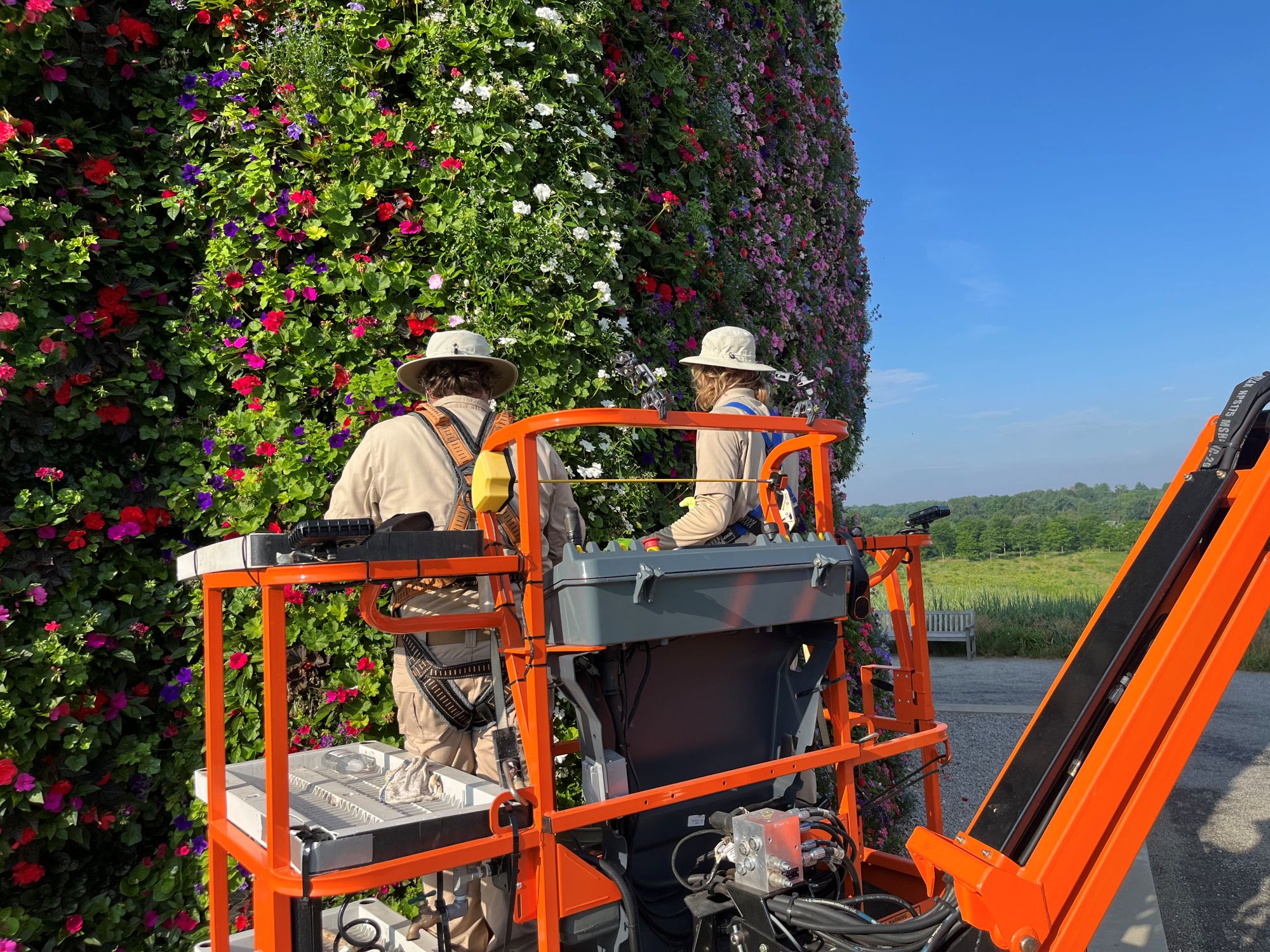While I knew my interest in the environment would lead me to new places, I never expected it to put me 40 feet in the air on a cherry picker working on a multimillion-dollar sculpture by renowned artist Jeff Koons. Regardless of my expectations and crippling fear of heights, that’s one of the many things that I did over the summer of 2025 at Glenstone.
In 2006, billionaire Mitch Rales and his wife, Emily Wei Rales, founded the contemporary art museum, Glenstone, in Potomac, Maryland. Almost 20 years and several renovations later, the museum has grown into the largest private contemporary art museum in the United States. In addition to hosting art pieces, the 230-acre campus is overflowing with natural life. Described by the Washington Post as “an oasis of art,” and containing “modern masterpieces complemented by natural beauty and fresh, energetic architecture,” Glenstone is a unique jewel in the DC area.
Based on principles of environmental conservation and the promotion of native plants, the property boasts an impressive landscape that aims to combat invasive species and provide an oasis from the stress of nearby Washington, D.C. Notably, Glenstone accomplishes this without the use of conventional herbicides. Organic herbicides, manual removal, and IPM tactics are utilized instead. This is all done by the Grounds Team, which I was lucky enough to join during the summer of 2025 as their intern.
As the intern for the Grounds team, I was tasked with aiding in the management of this huge property, which usually involved assisting the long-term associates with their tasks. My assigned daily tasks depended on the day and the weather. Still, it was common for me to remove invasive plants, rake the gravel underneath the benches, and provide manual help when disposing of tree limbs and other organic waste. During the course of these tasks, I learned the principles of organic invasive plant management and improved my identification skills with every plant I pulled or trimmed. One of my favorite parts of supporting the Grounds Team was planting any new plants, as I know that when I return, these plants will still be there, allowing me to leave a lasting impact on the landscape. I also gained experience utilizing electric equipment, such as weed whackers or hand trimmers. I even went up on a cherry picker to aid in the weeding of Jeff Koons’ living sculpture, “Split Rocker.”
One key component of my internship was my project, which spanned the entire summer. Entitled “Fun with Ferns,” I studied the inconsistencies in the fern growth along a path on the lower side of campus. In two different areas only meters apart, there was a vast difference in the number of native ferns without any obvious cause. I measured a variety of factors, including sunlight, moisture, and the nutrient levels through soil testing. In the end, my results were inconclusive, but it was still worthwhile as I improved my research skills over the 10 weeks that I was there.
While my internship only lasted a summer, it still gave me experience working with native plants, which I will remember for the rest of my life. I also learned about the challenges of maintaining a landscape dotted with sculptures and the precision required for it. I also got a taste of working out in the hot summer heat for 8-hour days, which will be an experience I will repeat in the future. All of the experiences in my internship culminated in a useful starting point for my future career in the environment. No matter where that takes me, I will always remember the summer when I spent a day 40 feet in the air.
